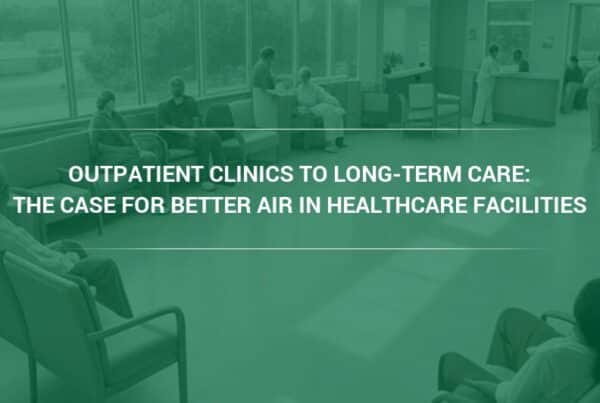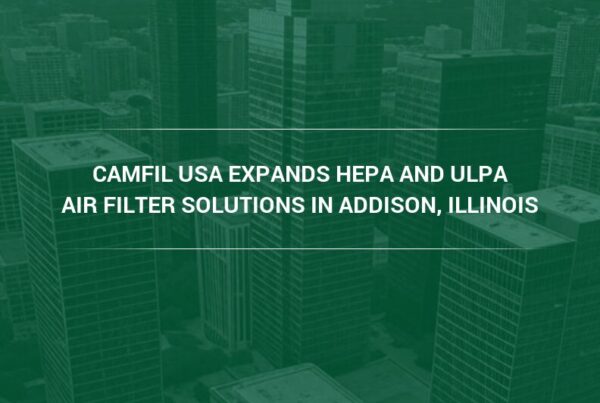05/31/2011 // Riverdale, NJ, USA // Camfil USA // Lynne Laake // (press release)
It’s no surprise to learn that cost has become the dominant factor in hospital air filterpurchasing decisions these days. After all, economic downturns, pressures to cut expenses, and the struggle to do more with less have hit — and impacted — every industry and business. But there are multiple facets to cost, and often something that looks like a quick way to save turns out to cost much more than one thought. This is particularly true in hospitals and other healthcare facilities, where the long-term consequences of short-term savings can be unexpected — and unwanted. Case in point: hospital air filters.
An air filtration system with a low upfront cost is a tempting proposition — until you realize that the upfront cost is only the beginning. Low-cost filters don’t typically boast innovative designs — the kinds that boost efficiency — so they tend to require more energy, more change outs, more maintenance, and higher disposal costs than customers think. And it all adds up.
In designing its innovative family of hospital air filters, Camfil USA set out to change that, creating air filtration solutions that deliver maximum savings in four key categories — while providing optimal performance, and keeping the air clean and comfortable. So instead of costs piling up, it’s benefits that accrue. Here’s how Camfil USA tackles — and saves — in multiple ways.
– Energy Costs
Air filters use energy — often, a lot of it. In fact, the third largest energy cost item in a healthcare environment is the energy needed to move air through heating and air conditioning systems. Air filtration is generally the largest component of these energy costs, as filters by nature create resistance to airflow.
Many hospital air filters — particularly commodity filters designed with low-tech, low-cost coarse fiber media – degrade in efficiency rapidly and an ever-increasing amount of energy is required to push the air through the filter. But because Camfil USA air filters feature innovative fine fiber media, they maintain their efficiency throughout their service life and dramatically lower energy demands than competing products. Indeed, hospitals that switch to such filters — including Camfil USA’s 30/30 and Durafil ES filters — can see their annual energy costs drop by up to 40 percent.
– Reduced Risk of Hospital-Acquired Infections
When dangerous particles spread through hospital air, the chance of airborne infection grows — a serious health hazard in any environment, but particularly in a healthcare facility, where patients are recovering from surgeries and illness, and infection can cause major setbacks, and worse. When air filters run inefficiently — such as when they’ve passed their optimal performance but have yet to be replaced — they become less successful filtering out contaminants, and patients become at risk. Today in the U.S., 1 patient in 10 — or 2 million a year — suffers a hospital-acquired infection. It’s an outcome no healthcare facility wants to see.
There is a financial aspect, as well. Cost estimates for these events range from $4.5 billion to $27 annually — either end of the spectrum a staggering amount. With a third of hospital-acquired infections judged preventable, it’s little wonder that the Centers for Medicare and Medicaid Services no longer reimburse patients for some infections they deem should never have happened. Private insurers are sure to follow.
By operating at peak efficiency, Camfil USA air filters reduce the spread of infection because they do a better job keeping dangerous particles out of the indoor air. That keeps patients healthy, and hospitals better able to focus their resources where they do the most good: on medical care.
– Reducing Disposal Costs
The innovative design of Camfil USA hospital air filters — and their prolonged life expectancy — mean that they don’t have to be changed out as often as more traditionally designed filters. That means fewer filters to dispose of. It’s good news for the environment, of course: fewer filters heading to landfills, for one thing. But it’s also good for the hospital’s bottom line, as air filters, in particular, can trigger high disposal costs. In many areas, regulations require that hospital air filters be labeled as ‘red-bagged’ waste — with average disposal costs some 19 times higher than for ordinary solid waste. Offering a 50 percent annual reduction in filter waste sent to landfills, Camfil USA air filtration solutions drastically reduce a hospital’s disposal costs — more savings that can be devoted to patient care.
– Reducing Total Cost of Ownership
Fewer change outs don’t just mean lower disposal costs, however. They mean a decrease — and a dramatic one at that — in related costs, like labor, maintenance, and, not insignificantly, the cost of the replacement filters themselves. Camfil USA has developed sophisticated Life Cycle Cost software to help hospitals calculate the total cost of ownership for different filters they’re considering. Invariably, the results are clear: Built from the ground up for sustainability and performance, Camfil USA filters do a better job of saving in the long run — not to mention, a better job of filtering air.
The world leader in air filtration systems and clean air solutions — for health care and other industries — Camfil USA provides the tools to achieve sustainability, maintain high air quality, and reduce airborne infections; all while lowering total cost of ownership. We’ve helped hospitals, office buildings, hotels, and other facilities go green without ever sacrificing performance. For more hospital air filter information, visit our newsroom at https://hvacairfiilters.submitmypressrelease.com, read about the Clean Air Solutions Company at https://cleanair.camfil.us, or call us at (toll free) 888.599.6620.
Media Information:
Address:
Phone: 888.599.6620
Url: HVAC Air Filters



